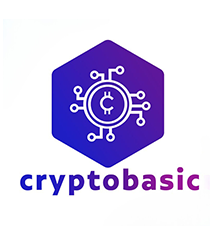
Kopalnie Krypto Team - Friday 21 July 2023
Basics of blockchain - consensus mechanisms
Time for the final part of the "Basics of Blockchain" series. As a reminder: in the first part, we presented this technology in a straightforward manner and discussed matters of its security. The second volume, on the other hand, delved into the applications of blockchain technology. We save the most challenging part for the end, and here we refer to technological issues. Don't worry; we won't bore you. We just need to explain a few things that we'll encounter again in the future.
How does blockchain work?
The general principle of operation is simple. In fact, the basic operations on the blockchain stem from its name. This technology packs transactions into blocks. Hence the first part of the name. But what's the deal with this chain? Well, it's not that anyone can generate a block and simply force it upon all network users. It involves information about transactions and, therefore, funds. For this reason, each new block must be verified by other network nodes before it can be added to the rest of the blocks like another link in the chain. Alright, but how do nodes verify blocks? Do they vote, pull straws, or engage in sword fights? Jokes aside, we are now addressing the most crucial aspect of blockchain technology - the consensus mechanism. It is the one responsible for validating successive blocks, and its various forms are often featured in publications related to cryptocurrencies. Can't remember? Proof of Work, Proof of Stake, and Proof of Space and Time. Familiar and commonly used names, and today we'll explain them.
Proof of Work
Let's start with the most popular method, which once enjoyed significant recognition but is gradually falling out of favor. We are talking about Proof of Work (PoW), the consensus mechanism initially associated with Bitcoin. So, you could say that everything started with it. How does it work? This method requires network nodes to use computational power to decrypt transactions. The node that solves the cryptographic puzzle assigned to a particular transaction receives a reward. The remaining nodes then add this transaction to the blockchain. That's how cryptocurrency mining works in the case of Proof of Work. Contrary to the belief of some individuals, it's not like "Bitcoins are flying somewhere in the air, and you have to find them." Cryptocurrency is nothing but a reward that a miner receives for participating in maintaining and securing the network.
Proof of Work is a secure method. However, it has some significant drawbacks, which prompt sharp minds in the crypto world to create alternative solutions. The most significant issue is the need to build a so-called "miner" - a specialized computer with considerable computational power, usually generated by multiple graphics cards. Here comes the first problem - the costs of obtaining such hardware. Let's say we managed to organize such a miner. Now, we just need to look at the electricity bill. It spins like a tornado, right? This is precisely the main problem with Proof of Work - massive energy consumption. Nowadays, every effort is made to reduce power consumption to a minimum. The truth is that Proof of Work doesn't quite go hand in hand with the energy crisis. That's why interesting alternatives have emerged, which compete with PoW to varying degrees of success.
Proof of Stake
Proof of Stake (PoS) emerged as an alternative consensus mechanism and is currently associated with Ethereum. It was also popularized by this cryptocurrency when it transitioned from PoW to PoS. Why was such a decision made at all? Ethereum is currently one of the most popular cryptocurrencies. Relying on the Proof of Work method, it drew criticism due to significant energy consumption. This was one of the reasons why Ethereum made such a radical change.
In the case of Proof of Stake, there is no concept of miners or farmers. There is no need to solve any cryptographic puzzles. Instead, PoS creates and verifies transactions based on the cryptocurrency held by users, which they are willing to "stake" as security. Participants in the network take turns creating and validating transactions based on their "staked" shares. Rewards are then distributed among them. Proof of Stake eliminates the drawback of Proof of Work, which is energy consumption. However, the price for this is the criticism from users who emphasize decentralization, a feature that has been affected to a great extent in this case. PoS is criticized for being a mechanism that contradicts the nature of blockchain technology, which in turn may raise concerns about security.
Proof of Space and Time
As you can see, the above mechanisms have their strengths and weaknesses. However, if we look at the calendar, we'll realize that we live in the 21st century. When it comes to technology, our only limitation is imagination. There must be some compromise between the two previous methods. On the other hand, why do we need any compromise at all? Can't we just develop an uncompromising mechanism with low energy consumption and a high level of decentralization? We can. Chia Network proved that.
Proof of Space and Time (PoST) is an innovative consensus mechanism pioneered by the Chia network. It utilizes unused disk space and takes time into account. Both factors create a consensus without verifiers (PoS) and cryptographic puzzles (PoW).
Proof of Space and Time uses storage space (hard drives) instead of computational power concentrated in graphics cards. What does this achieve? It undoubtedly reduces the costs of maintaining the network, both in terms of hardware value and electricity consumption. The so-called entry threshold is relatively low, making it easier for more users to verify transactions and secure the network. In other words, PoST combines the decentralized nature of PoW and the low energy costs characteristic of PoS.





















